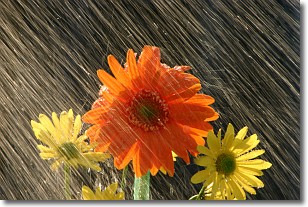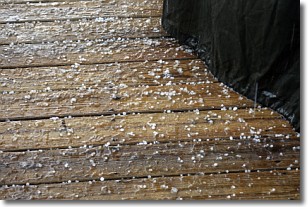Weather Alert in Indiana
Flood Warning issued June 20 at 9:26PM EDT until June 23 at 6:30PM EDT by NWS Indianapolis IN
AREAS AFFECTED: Daviess, IN; Gibson, IN; Knox, IN; Pike, IN
DESCRIPTION: ...The Flood Warnings continue for the following rivers and locations in Indiana...Illinois... White River at Elliston and Edwardsport. Wabash River at Lafayette, Riverton, and Hutsonville Legacy Power Plant Site ...The Flood Warning is extended for the following river in Indiana... Wabash River at Montezuma. .Repeated rounds of showers and thunderstorms, including on June 18 and 19, plus dam releases of water upstream from Lafayette, brought new rises to area waterways. Lowland flooding on the Wabash River should end by late Saturday...earlier at most locations. Water levels on the White River at and downstream from Elliston will either cause lowland flooding or be very near bankfull through as late as Tuesday. Hot temperatures with meager chances of rain and plenty of sunshine well into next week will promote drainage and drying of soil. * WHAT...Minor flooding is occurring and minor flooding is forecast. * WHERE...White River at Edwardsport. * WHEN...Until Monday evening. * IMPACTS...At 16.0 feet, Old Vincennes Road and residential property in this area begin to flood. Flooding of low agricultural fields occurs along portions of the river. * ADDITIONAL DETAILS... - At 7:00 PM EDT Friday /6:00 PM CDT Friday/ the stage was 15.5 feet. - Recent Activity...The maximum river stage in the 24 hours ending at 7:00 PM EDT Friday /6:00 PM CDT Friday/ was 15.5 feet. - Forecast...The river is expected to rise to a crest of 16.0 feet tomorrow evening. It will then fall below flood stage Monday morning. - Flood stage is 15.0 feet. - http://www.weather.gov/safety/flood
INSTRUCTION: Caution is urged when walking near riverbanks. Flooding is occurring or is imminent. Most flood related deaths occur in automobiles. Do not attempt to cross water covered bridges, dips, or low water crossings. Never try to cross a flowing stream, even a small one, on foot. To escape rising water find another route over higher ground. Additional information is available at www.weather.gov/ind. The next statement should be issued Saturday afternoon by around 200 PM EDT /100 PM CDT/.
Want more detail? Get the Complete 7 Day and Night Detailed Forecast!
Current U.S. National Radar--Current
The Current National Weather Radar is shown below with a UTC Time (subtract 5 hours from UTC to get Eastern Time).

National Weather Forecast--Current
The Current National Weather Forecast and National Weather Map are shown below.

National Weather Forecast for Tomorrow
Tomorrow National Weather Forecast and Tomorrow National Weather Map are show below.

North America Water Vapor (Moisture)
This map shows recent moisture content over North America. Bright and colored areas show high moisture (ie, clouds); brown indicates very little moisture present; black indicates no moisture.

Weather Topic: What is Rain?
Home - Education - Precipitation - Rain
 Next Topic: Shelf Clouds
Next Topic: Shelf Clouds
Precipitation in the form of water droplets is called rain.
Rain generally has a tendency to fall with less intensity over a greater period
of time, and when rainfall is more severe it is usually less sustained.
Rain is the most common form of precipitation and happens with greater frequency
depending on the season and regional influences. Cities have been shown to have
an observable effect on rainfall, due to an effect called the urban heat island.
Compared to upwind, monthly rainfall between twenty and forty miles downwind of
cities is 30% greater.
Next Topic: Shelf Clouds
Weather Topic: What is Sleet?
Home - Education - Precipitation - Sleet
 Next Topic: Snow
Next Topic: Snow
Sleet is a form of precipitation in which small ice pellets are the primary
components. These ice pellets are smaller and more translucent than hailstones,
and harder than graupel. Sleet is caused by specific atmospheric conditions and
therefore typically doesn't last for extended periods of time.
The condition which leads to sleet formation requires a warmer body of air to be
wedged in between two sub-freezing bodies of air. When snow falls through a warmer
layer of air it melts, and as it falls through the next sub-freezing body of air
it freezes again, forming ice pellets known as sleet. In some cases, water
droplets don't have time to freeze before reaching the surface and the result is
freezing rain.
Next Topic: Snow
Current conditions powered by WeatherAPI.com




